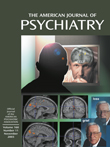In this highly engaging volume, Young and colleagues offer a robust clinical model and a compelling treatment protocol for the whole spectrum of personality disorders. Young’s work has its roots in Aaron T. Beck’s model of cognitive behavior therapy. Yet Schema Therapy is an integrative approach, one that contains intriguing possibilities for integrating cognitive behavioral, psychoanalytic, and experiential approaches to treatment. Striving to develop “the bible” of schema therapy (p. vii), Young and colleagues have written a rich and important addition to the psychotherapy literature. But it is an addition that is not without its controversial elements.
At its heart, the book takes a developmental perspective on the formation and treatment of personality disorders. The lack of a developmental theory in cognitive behavior therapy has long been problematic when cognitive behavior therapy has left the confines of theory and treatment of axis I disorders. Young and his colleagues argue that the core beliefs, affects, and problematic interpersonal and coping patterns that characterize personality disorders frequently have at their center developmental difficulties.
Young draws heavily on psychoanalytic developmental models in Schema Therapy. In particular, he develops a theory of “modes” as central to understanding the development and maintenance of maladaptive personality patterns. This theory, and its clinical applications, will look familiar to those with a psychoanalytic background, particularly those acquainted with Paul Federn’s theory of ego states and with Federn’s student Eric Berne, who developed transactional analysis during the 1950s and 1960s. If this derivation is intriguing, there is at least one potentially disturbing implication in basing an ostensibly empirically supported treatment on earlier, psychoanalytically derived models. Young and colleagues make frequent reference to “offending parents” in the etiology of personality disorders, particularly for borderline personality. Although Young speaks of temperament as creating a vulnerability to developing borderline personality, he and his coauthors come close to making parental neglect and abuse an a priori cause of borderline pathology. One is reminded of Fromm-Reichmann’s unfortunate term “the schizophrenogenic mother.” Those steeped in an empirical tradition, and Young is among them, must be vigilant to avoid the excesses of earlier, punitive, and erroneous causal attributions.
In terms of treatment, the shortcomings of brief cognitive behavior therapy with personality disorders are addressed through an eclectic blend of standard cognitive therapy, psychoanalytic, experiential, guided imagery, and Gestalt techniques. In addition, the therapy relationship is deemed paramount in creating a climate of safety, in which enduring change becomes possible. Young and colleagues generally maintain the collaborative and respectful stance toward patients that characterizes standard cognitive therapy, as developed by Aaron T. Beck. Young argues that “limited reparenting” may be advised in some cases, a contention that may spark debate within the field. But the volume deals with this issue in a manner that is respectful of patient autonomy and dignity.
This is a must-read book for all those interested in personality disorders and in psychotherapy integration. Its strengths are legion, and its controversial contentions should spur much-needed debate and even more-needed research.

